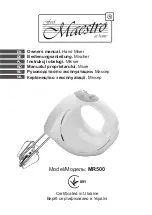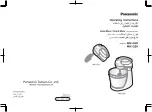
To permanently save a mix pass, it must be saved to the Vision PC, where it will appear in
a historical list known as the “Mix Tree.” Once your mix pass is saved to the Vision PC, it
is stored on the computer’s hard disk immediately. At this point, a mix pass is also
referred to as a “mix file.”
A Project File must be open in order to save a mix pass to a Mix Tree.
An old or alternative mix pass in the Mix Tree can be loaded at any time. Once a mix
pass is loaded back into the ACM, it becomes the active mix pass.
As an aside, group assignments are also stored in mix passes. This means that when an
existing mix pass is loaded from the Mix Tree, all of the groups are exactly as they were
when the mix pass was saved. If you return to a newer mix file, the newer groups are
restored.
26.2.6
Initial Positions
The Vision automation system does not require you to define the start point of a song.
This is because of the “Initial Positions” described below.
When you start a new mix, the ACM memory is cleared and the console is scanned for its
current positions. These positions are recorded at the beginning of the new mix pass as
initial positions. In most applications, a rough mix will be created manually and the
control positions of that mix will become the initial positions in a new mix pass.
The initial positions are essentially an “initial mix snapshot” of the positions of all faders
and switches in the automation system. These initial positions stored at Timecode
location 00:00:00:00. This is not the same as the snapshots described in section 23.0
Snapshots.
Initial positions are recorded for the entire duration of Timecode, from 00:00:00:00 to
23:59:59:xx. It is on this blank canvas that you will continue your mix. Since the start
time of every mix pass is 00:00:00:00, if the convention of starting mixes well after
00:00:00:00 is followed, plenty of pre-roll will be available if needed.
After the initial positions are recorded, the entire console can be set to playback moves in
Read mode, roll to any Timecode location, and the faders/switches will not move.
Initial positions may be altered at any time, using of the Static submode, described in
section 26.5.3 Automation Submodes.
26.2.7
End-Of-Pass Processes
When any changes are written, “end-of-pass” processes are performed when Timecode
playback is stopped. These processes include:
•
Processing of all data transitions
•
Updating the mix pass in the ACM with the new data
•
“Auto Safe” functions (if engaged)
•
“Auto Save” functions (if engaged)
Nothing is written to the ACM memory until Timecode is stopped.
End-of-pass processes maybe modified using the following functions:
Kill Mix: Suppresses end-of-pass processes when Timecode is
stopped. It activates a flag to discard any changes made during
the current automation pass.
•
“Kill Mix” can be engaged at anytime, by clicking the
button on the Vision Control Panel or in the Global
Functions window.
Содержание 7-22-10
Страница 30: ...3 5 1068L Input Module ...
Страница 146: ...The diagram below indicates which 1068L parameters are controlled by the automation or recall system ...
Страница 232: ...The diagram below indicates which 1068L parameters are controlled by the automation and recall systems ...
Страница 283: ...Use the up and down arrow buttons to open the second page Press the No Cancel button to return to the Main Menu ...
Страница 339: ......
Страница 375: ......
















































